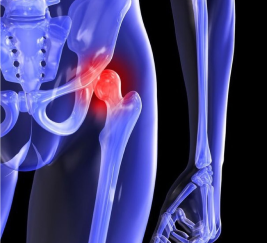Musculoskeletal Injuries
3.85 million Australians are affected at a cost to our economy of more than $23.9 billion each year in medical care and indirect costs such as loss of earnings and lost production. According to the Global Burden of Disease estimates, low back pain is ranked first in Australasia (including Australia and New Zealand), compared to sixth in the world. Neck pain is ranked 10th compared to 21st in the world, and osteoarthritis is ranked 23rd compared to 38th in the world. 28% of Australians have arthritis and other musculoskeletal conditions.
Arthritis is a common condition that can affect people of all ages. Arthritis affects the muscles, bones and joints and usually involves inflammation of one or more joints. The symptoms of arthritis are pain and swelling in the joints and surrounding tissues. This is often accompanied by stiffness and decreased movement.


There are 4 common forms of arthritis∶
- Osteoarthritis∶ caused by wear and tear on joints
- Rheumatoid arthritis∶ an autoimmune disease that causes pain and inflammation in joints
- Gout∶ caused by a build-up of uric acid in the bloodstream
- Rheumatologically or auto immune types of arthritis, such as ankylosing spondylitis, psoriatic arthritis, lupus and others.
According to Australia’s Health report people with arthritis and other musculoskeletal conditions were more likely than the overall population to also report the following∶
- limitations in performing core activities
- high or very high psychological distress mental disorders.
Osteopathy can be one of the possible treatments for patients suffering from arthritis. Osteopathy is a form of manual healthcare which recognises the important link between the structure of the body and the way it functions. Osteopaths focus on how the skeleton, joints, muscles, nerves, circulation, connective tissue and internal organs function as a holistic unit.
Osteopaths can help arthritis sufferers by:
- Working on the surrounding muscles to reduce stiffness and soreness.
- Improving lymphatic drainage to reduce swelling.
- Gently moving and stretching the arthritic joint to encourage better fluid movement.
- Providing advice on ways to reduce inflammation.






